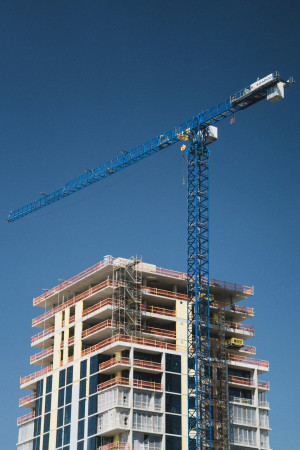A commercial lease is the foundation of the relationship between landlord and tenant. It sets the financial framework, outlines rights and obligations, and determines how premises can be used, altered, and ultimately vacated.
Unlike retail shop leases, which are heavily regulated by statute, commercial leases are governed mainly by the words on the page. The Conveyancing Act 1919 (NSW), the Real Property Act 1900 (NSW), and general principles of contract and property law provide the legal backdrop, but there are far fewer built-in protections for tenants.
This makes the drafting and negotiation of commercial leases critical. A poorly worded clause can expose tenants to significant costs or limit a landlord’s ability to protect the value of their property. Below is an overview of the clauses most commonly found in commercial leases — and why both landlords and tenants should pay close attention to them.
Rent and Rent Reviews
Rent is the cornerstone of the lease. The way it increases over time is just as important as the starting figure.
Most commercial leases provide for fixed annual increases (for example, 3% each year), reviews linked to the Consumer Price Index, or market reviews at set intervals. Market reviews are often contentious. If the lease does not clearly prescribe how rent is to be determined — for example, by appointment of an independent valuer — disputes can arise.
Outgoings
Beyond rent, commercial tenants are often required to contribute to the property’s running costs. Outgoings may include council and water rates, land tax, building insurance premiums, and maintenance of common areas.
Because commercial leases are not subject to the statutory disclosure obligations that apply to retail leases, the parties are free to negotiate these terms amongst themselves, and the lease records the terms that have been agreed upon.
Repairs and Maintenance
One of the most important divisions of responsibility in a commercial lease is who must repair and maintain the premises.
Landlords generally retain responsibility for structural repairs and capital replacements. Tenants are usually responsible for day-to-day maintenance and minor repairs. The balance of who is responsible for what may be shifted in the terms of the lease.
Fit-Out and Alterations
Commercial tenants often invest heavily in fitting out premises to suit their business. Most leases require landlord consent before works are undertaken, along with compliance with planning laws, building codes, and fire safety standards.
Ownership of fit-out items can be tricky. Fixtures — items attached to the premises — often become part of the landlord’s property unless the lease provides otherwise. Tenants may also be required to remove their fit-out at the end of the term, sometimes at significant cost. It’s essential that the parties fully understand their obligations prior to signing a commercial lease.
Make Good Obligations
Few areas cause more friction at the end of a lease than “make good” obligations.
Many leases simply require the tenant to “return the premises to its original condition.” Without a condition report or photographic schedule at the start, this can be fertile ground for disputes. It is therefore important that the parties arrange and agree on a condition report at the commencement of the lease.
Assignment and Subletting
Commercial tenants often want flexibility to assign or sublet if their business circumstances change. Most leases prohibit this without the landlord’s written consent.
This is because although landlords may have approved the original tenant, they may not be satisfied with the financial standing or commercial acumen of the proposed new tenant.
Unlike retail leases, there is no statutory requirement that consent not be unreasonably withheld. Whether a landlord must act reasonably depends on the drafting. Even where consent is granted, outgoing tenants may remain liable for the lease unless expressly released. Without a release, tenants can find themselves responsible for defaults long after handing over the keys.
Option to Renew and Lease Term
Options to renew are vital for business continuity, but they must be exercised strictly in accordance with the lease. That usually means giving written notice within a fixed period — often several months before expiry — and being free of breach.
Courts require certainty in option clauses. If the mechanism for determining rent under the renewed term is unclear, or the notice requirements are ambiguous, the option may be unenforceable. Missing the notice deadline almost always results in forfeiture of the right to renew.
Insurance and Indemnities
Commercial leases carefully allocate risk through insurance and indemnity provisions.
Landlords usually insure the building and sometimes loss of rent. Tenants insure their own contents and hold public liability insurance. Indemnities are typically drafted broadly, requiring tenants to indemnify the landlord for loss “arising out of the tenant’s use of the premises.” Such clauses are enforceable but strictly construed. Poorly worded indemnities can expose tenants to liability for events beyond their control.
Termination and Default
Termination provisions set out when a landlord may bring the lease to an end. Common triggers include non-payment of rent, breach of covenant, or insolvency.
Importantly, under s 129 of the Conveyancing Act 1919 (NSW), a landlord cannot simply re-enter. They must serve written notice specifying the breach and allow a reasonable time to remedy it. If they fail to do so, the re-entry will be unlawful.
Where termination is valid, landlords may be able to re-enter, claim damages for lost rent until the premises are re-let, and retain the tenant’s fit-out. For tenants, the consequences of default can be severe.
Conclusion
Commercial leases are complex, high-stakes contracts. They allocate costs and risks that can determine whether a business thrives or fails. Unlike retail leases, there are no statutory safety nets. The words of the lease — and how they are negotiated — are decisive.
For landlords, enforceable clauses protect the value of their asset. For tenants, understanding obligations around rent, outgoings, make good, and renewal rights avoids unpleasant surprises.
The key lesson is simple: never treat a commercial lease as “standard form.” Each clause matters. Before signing, both landlords and tenants should obtain independent legal advice to ensure the document reflects their interests and provides a fair balance of risk.
We can help
At Thornton + King we have prepared and reviewed hundreds of commercial leases. Our lawyers have decades of experience in property law and commercial leasing, and our team includes multiple Law Society Accredited Specialists in Property Law. To speaking to a specialist commercial leasing lawyer, give us a call or submit an enquiry now.












